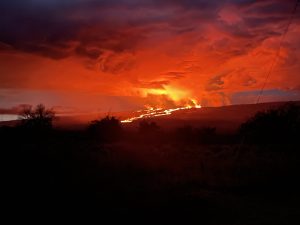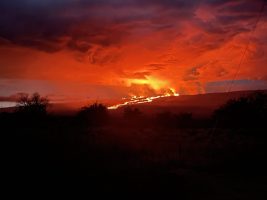
Hawaii is experiencing the rare sight of two neighboring volcanoes erupting simultaneously. New lava flows gushed down Mauna Loa, the world’s largest active volcano, and Kilauea on the archipelago’s Big Island Tuesday.
Kīlauea is the youngest and southeastern most volcano on the Island of Hawai‘i. The summit eruption of the Kīlauea Volcano, within Halemaʻumaʻu crater, continued over the past 24 hours. All recent eruptive activity has been confined to the crater. No significant changes have been observed at the summit or in either rift zone.
Topographically Kīlauea appears as only a bulge on the southeastern flank of Mauna Loa, and so for many years Kīlauea was thought to be a mere satellite of its giant neighbor, not a separate volcano. However, research over the past few decades shows clearly that Kīlauea has its own magma-plumbing system, extending to the surface from more than 60 km deep in the earth.
In fact, the summit of Kīlauea lies on a curving line of volcanoes that includes Mauna Kea and Kohala and excludes Mauna Loa. In other words, Kīlauea is to Mauna Kea as Kama‘ehuakanaloa (formerly Lō‘ihi) is to Mauna Loa. Hawaiians used the word Kīlauea only for the summit caldera, but earth scientists and, over time, popular usage have extended the name to include the entire volcano.
